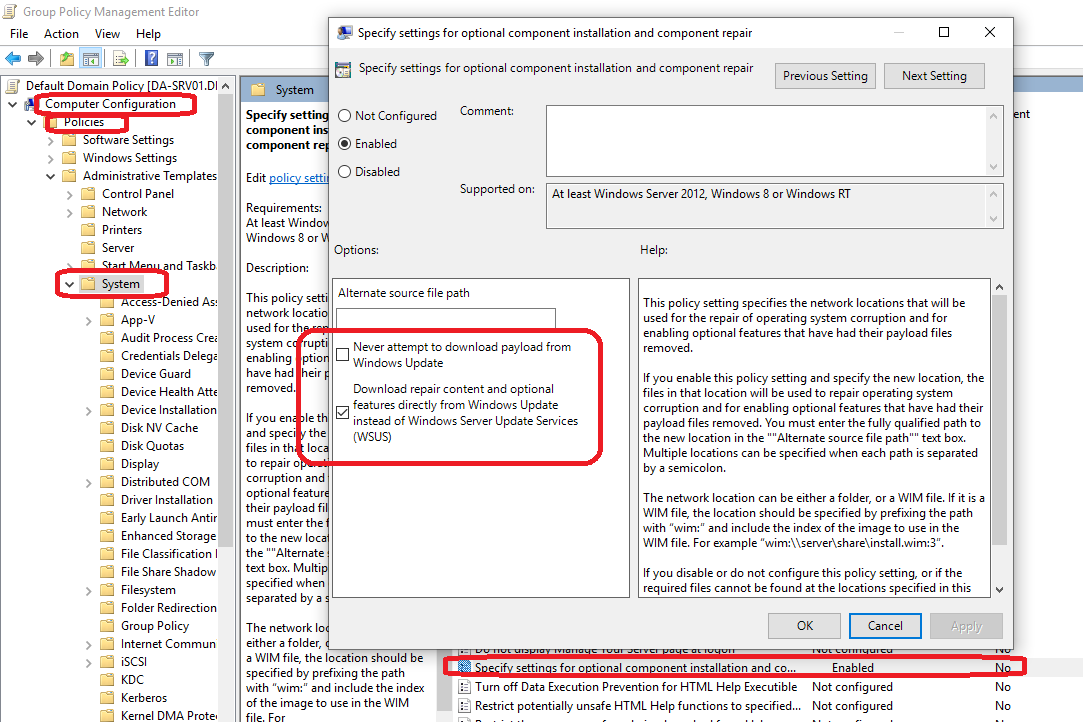

- #HOW TO REGISTER WINDOWS PC TO WSUS WITHOUT GPO UPDATE#
- #HOW TO REGISTER WINDOWS PC TO WSUS WITHOUT GPO WINDOWS 10#
- #HOW TO REGISTER WINDOWS PC TO WSUS WITHOUT GPO PRO#
- #HOW TO REGISTER WINDOWS PC TO WSUS WITHOUT GPO OFFLINE#
Write-host "Waiting 10 seconds for SyncUpdates webservice to complete to add to the wuauserv queue so that it can be reported on" & c:\bin\psexec.exe -s \\$Computer powershell.exe -command $Cmd $Cmd = '$updateSession = new-object -com "" $updates=$updateSession.CreateupdateSearcher().Search($criteria).Updates' # Have to use psexec with the -s parameter as otherwise we receive an "Access denied" message loading the comobject Invoke-Command -computername $Computer -scriptblock This has been a life changer in terms of improving my frustration level with managing WSUS.
#HOW TO REGISTER WINDOWS PC TO WSUS WITHOUT GPO UPDATE#
So below is a function you can add to your profile.ps1 file on your WSUS server to allow you to automatically update any client machines on demand: There may be a way around that but for now I found that psexec works fine.

If you want to run centrally from your WSUS server, I found that you can't use PowerShell remoting because of some kind of permissions thing.
#HOW TO REGISTER WINDOWS PC TO WSUS WITHOUT GPO WINDOWS 10#
I've tested it on both Windows 7 and Windows 10 clients successfully. It won't return anything but a few moments later you should see the WSUS last contact and last detect time update and more importantly, if all the updates were installed successfully, the computer will instantly change to green in the WSUS console. To use it, open an administrative PowerShell prompt on the client machine and paste that in. I've had a nearly 100% rate with this now over probably hundreds of machines. But if you run the command above first, then it works. you've done that a million times and it's never worked. Running this command will "prime" the Windows Update engine to submit its most recent status on the next poll. $updateSession = new-object -com "" $updates=$updateSession.CreateupdateSearcher().Search($criteria).Updates Ladies and gentlemen, without further adieu, I present to you, THE command to run on your Windows clients to force them to check in on demand: After many hours at this, I was just about to give up when I accidentally stumbled upon the magic command I was looking for. I then proceeded to deep dive with process monitor and packet analyzers to try and find a way to "trick" the WSUS client into thinking it's time to report in. I built a lab environment consisting of a domain controller, a WSUS server and a client machine. I finally decided to take matters into my own hands. And I swear I've read every single one of them and tried every single suggestion. If you google "force wsus client to check in to wsus server", you'll see almost 300,000 results. Is that really too much to ask? Actually, it might be.

All you want is for your clients to report their current status into WSUS on demand. NET method (New-Object -ComObject ).DetectNow().īut despite having tried everything, you're at at a loss. You know about wuauclt /reportnow and /detectnow. In either case, you are mostly frustrated because even in the latest release of WSUS that there is no reliable way to force clients to check in and report their status. Perhaps you're relatively new to WSUS or you're a veteran that has been using the product since its inception. I know some of the teams have still been dealing with Covid issues, but for the most part I think its been a good season for College Basketball.You're most likely here because you are an IT administrator and you have a network that deploys Windows Updates via Windows Server Update Services or WSUS. Well its that time of the year again, Its March Madness.
#HOW TO REGISTER WINDOWS PC TO WSUS WITHOUT GPO OFFLINE#
#HOW TO REGISTER WINDOWS PC TO WSUS WITHOUT GPO PRO#


 0 kommentar(er)
0 kommentar(er)
